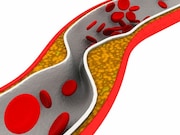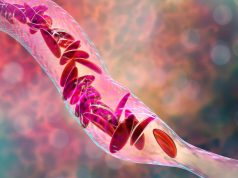Even with care in specialty clinics, LDL cholesterol levels remain above targets for most patients
MONDAY, Sept. 23, 2019 (HealthDay News) — Even with care in specialty clinics, low-density lipoprotein cholesterol (LDL-C) persists above target levels in more than half of patients with familial hypercholesterolemia (FH), according to a study published in the October issue of Atherosclerosis.
P. Barton Duell, M.D., from Oregon Health and Science University in Portland, and colleagues used data from the CASCADE FH Registry to assess longitudinal changes in medication usage, LDL-C levels, and the rate of major adverse cardiovascular events (MACE; myocardial infarction, coronary revascularization, stroke, or transient ischemic attack) in 1,900 adults (mean age, 56 years) with FH followed in U.S. specialty clinics.
The researchers note that 37 percent of patients had atherosclerotic cardiovascular disease (ASCVD) at enrollment, mean pretreatment LDL-C levels were 249 mg/dL, mean enrollment LDL-C levels were 145 mg/dL, and 93 percent of patients were taking lipid-lowering therapy. At a median follow-up of 20 months, the investigators found that lipid-lowering therapy use increased (mean decrease in LDL-C, 32 mg/dL). However, only 48 percent of patients achieved LDL-C <100 mg/dL and 22 percent achieved LDL-C <70 mg/dL. There was an association between ASCVD at enrollment and greater likelihood of goal achievement. Among patients with prior ASCVD, MACE rates were almost six times higher versus patients without a history (4.6 versus 0.8/100 patient-years). Markers of FH severity and conventional ASCVD risk factors were also associated with incident MACE.
“Earlier and more aggressive therapy of FH is needed to prevent ASCVD events,” the authors write.
Several authors disclosed financial ties to the pharmaceutical industry.
Copyright © 2019 HealthDay. All rights reserved.








